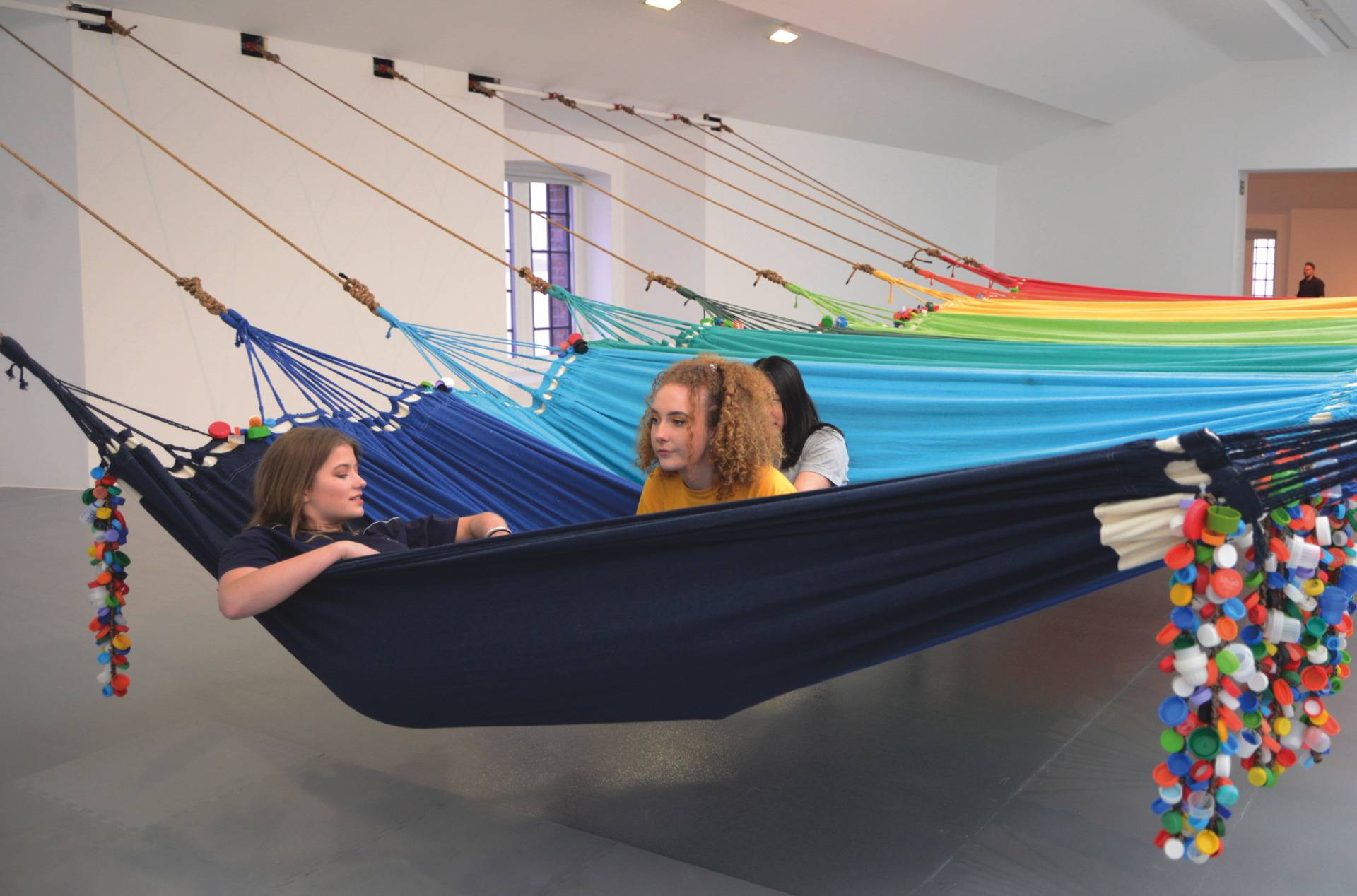Preview: Utupya
If sitting in a hammock and drinking tea doesn’t sound like art to you, an elderly man with animal prints on his bald head and a nine-year-old sculpture enthusiast would argue otherwise
Currently bringing Brazilian vibrancy to the imposing, brick-built warehouse complex that houses Tate Liverpool is Utupya, an interactive exhibition with the idea of unity at its core.
Presented as part of the collaborative We Have Your Art Gallery series, Utupya features a trio of installations, comprising an area dedicated to the creation and consumption of herbal teas, a vast hammock and a station enabling visitors to print whichever area of their skin they desire with animal patterns. Arranged throughout the Tate’s top floor gallery, each component brings colour and social interaction to the otherwise neutral, open-plan space. Created by Brazilian collective Opavivará, Utupya explores native traditions alongside the ideas of collaboration, spontaneity and the breaking down of barriers both social and political.
Naturally the herbal tea station, titled Pajé Curumin, acts as the exhibition’s hub, with visitors invited to take a seat and concoct a drink of their choice. Aiding the process are comprehensive leaflets detailing properties of the 24 ingredients on offer. Some more common herbal teas are available – chamomile, elderberry and peppermint, for example – alongside unexpected elements such as the aphrodisiac terba maté and the terrifying-sounding devil’s claw. It is here we find visitor Giselle Herbert drinking a tea blending hibiscus, elderberry and rosemary. “This idea seems to be both very British – with the tea drinking tradition – and very Brazilian,” she says. “And it does feel like the whole exhibition breaks down the barrier between the art and the visitor as it’s immersive as well as interactive. It seems like everyone’s embracing this idea of meeting others.”
Herbert’s neighbour Francesca Finney (french oak, marigold, elderberry, rosemary, hibiscus) agrees about the interactive elements offered by Utupya. “Sometimes galleries, rightly or wrongly, have a reputation of being a little bit stuck up so it’s nice to have something like this where you can relax, take part and socialise as well as simply view.”
How would Finney counter arguments claiming the exhibition’s huge hammock isn’t art at all? “You will get people saying that,” she explains. “But for me the fact that it’s in a gallery and it isn’t one specific, readily defined thing makes it a piece of art. I like that it pushes you to think about why it’s here at all.”
Titled Rede Social (Portuguese for “social network”), the hammock accommodates up to seven gallery visitors at a time. On a surface level, it’s designed to encourage collaboration between its inhabitants due to inherent instability. However, Opavivará also intends the piece to reflect the Brazilian tradition of giving a hammock to every child, which they keep and use throughout their entire life. A multitude of recycled plastic bottle tops hang from the work, adding further colour but also sound to the hammock experience as they rattle with every movement.
Nine-year-old Bella Atherton, visiting Tate Liverpool with her family, is certainly impressed with the piece. “It all looks so big and fantastic. One of the things I normally like about galleries is moving around sculptures because I can never decide what angle I like the best, but with this hammock it looks amazing from everywhere.”
During Big Issue North’s visit the Print Skin station is surprisingly quiet (though one elderly visitor is perusing Rede Social with his bald head sporting animal stripes) but Opavivará members, on hand themselves with leaflets outlining Brazil’s political problems, appear to have successfully combined exhibition viewing with the dismantling of societal barriers.Utupya is as informing as it is collectively engaging.
Utupya is at Tate Liverpool until 24 June

Leave a reply
Your email address will not be published.